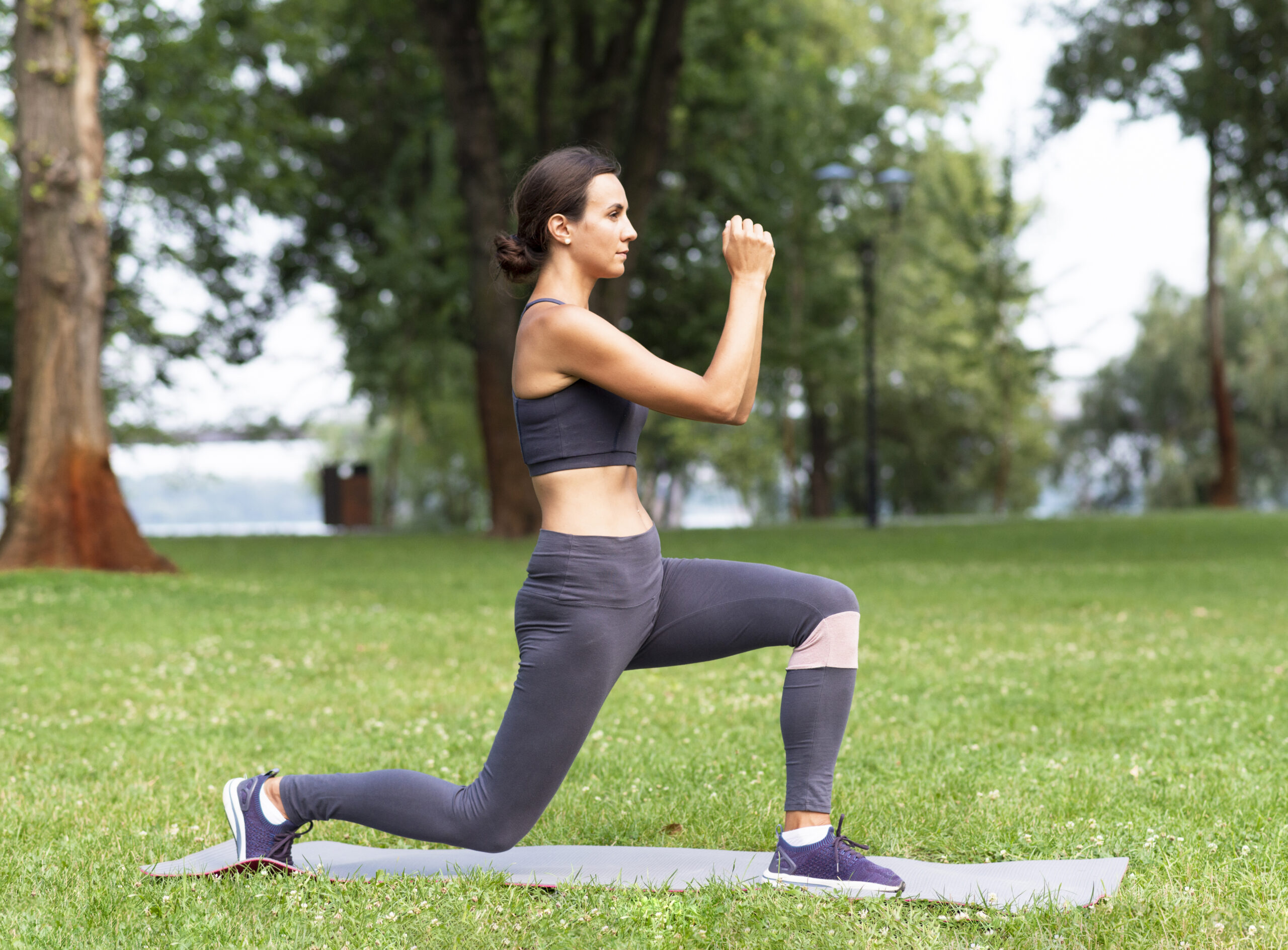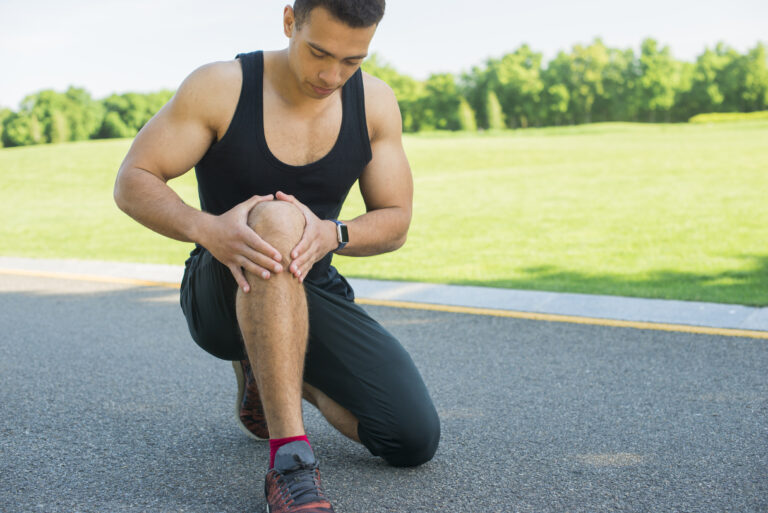Introduction:
Especially helpful for those with tendinopathy—a disorder in which tendons become irritated or painful—forward lunges are a popular and powerful exercise. Extra body weight strains tendons in those who have obesity, which raises their tendency of tendinopathy. Forward lunges, on the other hand, can assist increase mobility, strengthen the muscles surrounding the tendons, and reduces pain.
Particularly for those trying to control obesity-related tendon problems, this easy but effective exercise emphasizes on improving tendon health and can be a main component of a rehabilitation program.
What is Tendinopathy?
The general term for any tendon damage marked by pain and swelling is tendinopathy. Usually, it comes from overuse or abrupt tendon strain. Tendinopathy normally develops over time, unlike acute tendon injuries (tendonitis), so it is a chronic condition. Typical indications are:
- continuous discomfort during moving
- Softness in the concerned area
- Stiffness, especially after being still for a while

How Obesity Affects Tendons and Joints
Being overweight places a significant amount of burden on the lower body, particularly the joints and tendons in the knees, hips, and ankles. This additional weight functions as a constant load that these body parts must bear. Constant stress over time can lead to wear and tear, weakening the joints and tendons and increasing their likelihood of injury. Particularly, the Patellar tendon (which links the kneecap to the shinbone) and the Achilles tendon (which ties the calf muscle to the heel) can get irritated and inflamed. Because of the ongoing tension the increased weight causes, this inflammation causes pain that sometimes becomes a long-term problem.
Prevalence of Tendinopathy in Obese vs. Non-Obese Individuals
|
Tendon Type |
Obese Individuals (%) |
Non-Obese Individuals (%) |
|
Patellar Tendon |
35% |
15% |
|
Achilles Tendon |
30% |
10% |
|
Rotator Cuff Tendon |
20% |
8% |
Higher Risk of Tendon Injuries in Obese Individuals
Studies reveal that obese individuals have two to four times higher incidence of tendinopathies than those of normal weight. The patellar tendon at the knee is more sensitive because of the increased strain leaping, running, or walking creates. Patellar tendinopathy brought on by this stress can cause knee joint dysfunction and pain.
Emphasizing the importance of efficient preventive and rehabilitative measures for overweight populations, a study published in the Journal of Orthopedic Research shows that obesity is a main risk factor for patellar tendinopathy. Get more information about the weight related queries on https://weightvista.com
How Forward Lunges Address Tendinopathy
Exercises involving forward lunges consist on extending one leg forward and pressing the other knee into touch with the ground, then you must bend the knee bearing your body weight. Imagine yourself coming forward and bending your knees until your rear(back one) knee nearly touches the ground.
Working several lower body muscles, this movement includes:
- Quads (quadriceps): These are the muscles at the front of our thighs. These help us stand up straight on our toes or push our body forward after a stretch.
- Glutes (gluteus muscles): Buttocks consist of the gluteus muscles, or glutes. They are involved in hip extension to make you get up from the lunge position and also balance. They balance and help us get out of the lunge posture by extending our hips.
- Hamstrings: The muscles behind your thighs are called hamstrings. They help you to extend your body back from the standing posture and help to flex your knees.
For that reason, the lunge also works these muscles and the tendons that connect muscles to bones. We need strong tendons because they support our joints, make it easier for our bones to move, and keep us from getting hurt if we pull them during some exercises, like squats.
Though it tones the coordination and overall lower body endurance, this exercise targets numerous large muscles in the body, including the quadriceps, hamstrings, and glutes. It’s best for sports, treatment, and general conditioning and is usually included in regimens for strength and flexibility.
How to Perform Forward Lunges for Tendinopathy
Correctly execute the forward lunge for tendinopathy by following these guidelines:
- Starting Position: Standing tall, start with your feet shoulder width apart. Either place your hands at your sides or hold them on your hips to keep equilibrium.
- Step Forward: Step forward as much as you can using your right leg. Check to be sure your foot’s bottom is hitting the ground.
- Lower your Body: Lean your body by bending the right knee. Keeping the front knee over the ankle joint, the back knee should be somewhat off the ground.
- Push Back: Press through the front foot’s heel to get back to the beginning position.

Quick tips for the exercise:
- Keep your chest up and your core engaged throughout the movement.
- Avoid letting your front knee extend past your toes.
- Maintain a slow and controlled movement to avoid unnecessary strain.
- Most of the weight or pressure should be on the front foot.
Tendinopathy Management Sample Exercise Routine
|
Exercise |
Repetitions |
Sets |
Frequency |
|
Forward Lunge |
10-15 per leg |
3 |
3 times per week |
|
Eccentric Heel Drops |
15 per leg |
3 |
3 times per week |
|
Quadriceps Stretch |
30 seconds |
2 |
Daily |
|
Calf Stretch |
30 seconds |
2 |
Daily |
Conclusion
Because of additional pressure on joints and tendons, obesity, in particular, was proven to be a significant risk factor for tendinopathies. Particularly for the patellar and Achilles tendons, the forward lunge for tendinopathy essentially makes a great workout targeted at boosting muscular lower form strength, stabilizing the joint, and reducing the strain on the pathological tendons. Forward lunges should be included in an ex ercise regimen and, especially for overweight individuals, can help lower the risk of tendon injuries and improve the health of the tendons.
Frequently asked questions
Does tendinopathy call for surgical treatment?
Generally seen as a last resort for tendinopathy, non-surgical treatments are quite successful. Still, occasionally surgery could be required. This usually occurs when, after a reasonable length of time, conservative treatments—physical therapy and medication—have not been helpful. Talking all the possibilities with your doctor can help you decide on the best course of action for your particular circumstances.
Is the forward lunge safe for tendinopathy?
Although forward lunges can help some people with tendinopathy, it’s crucial to execute them properly under professional direction. Done wrong or with too much force, it might aggravate the problem.
Does type 2 diabetes result in tendinopathy?
Indeed, type 2 diabetes and tendinopathy are quite closely linked. Tendinopathy is far more likely to develop in persons with type 2 diabetes than in those without diabetes.
Many elements influence this higher risk:
High blood sugar levels may cause advanced glycation end products (AGEs) to develop, which can harm collagen, a fundamental component of tendons. This damage might make tendons weaker and more prone to damage.
Diabetes can compromise blood supply to the tendons, so slowing down the healing process and increasing the likelihood of tendon damage.
Diabetes-related nerve damage can lower sensation in the feet and other parts, therefore making it more difficult to spot and react to early symptoms of tendon damage.


